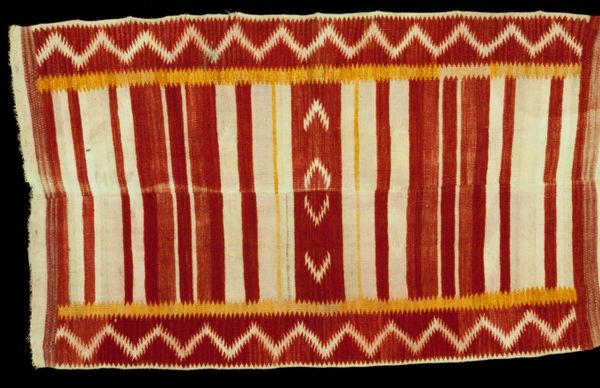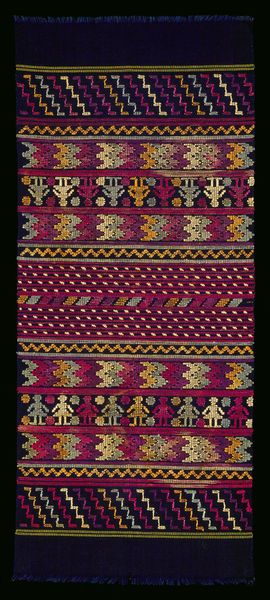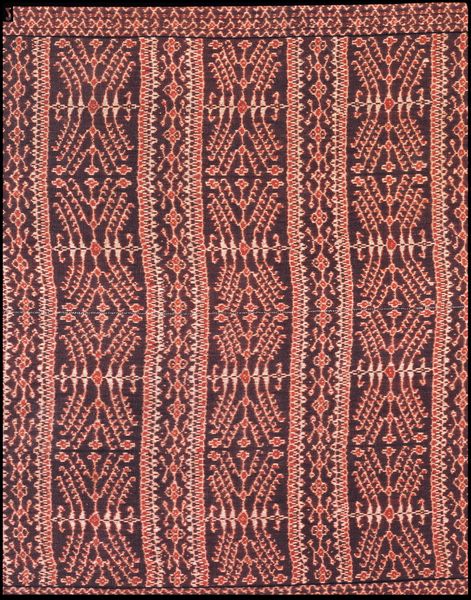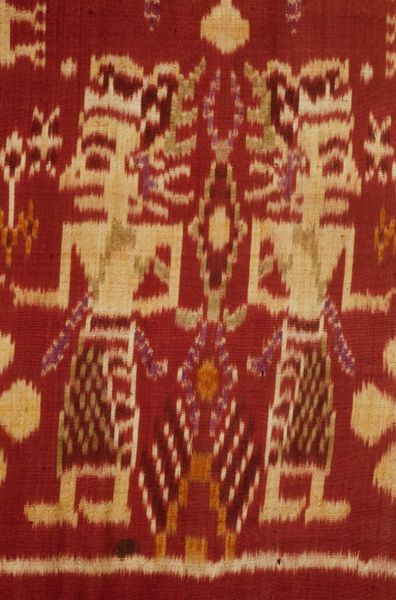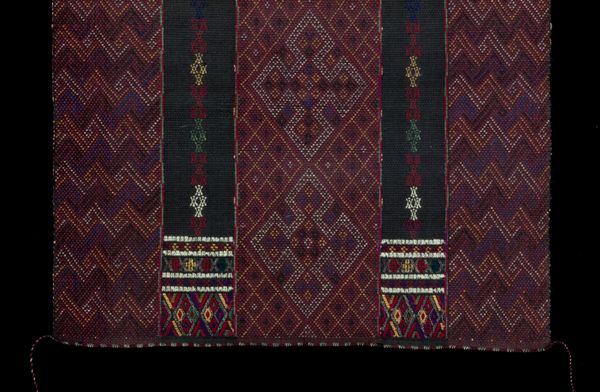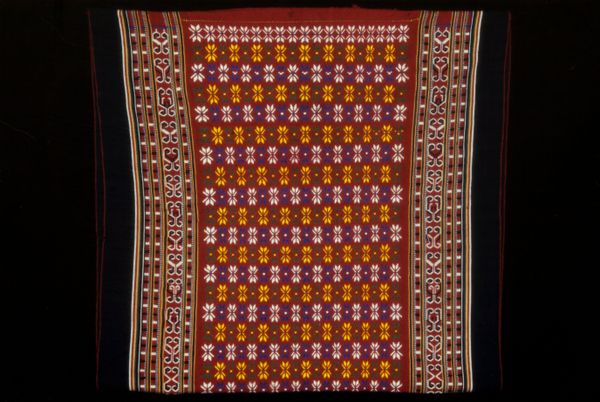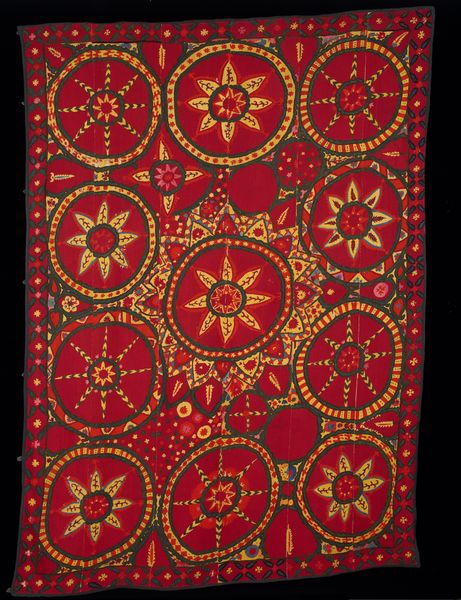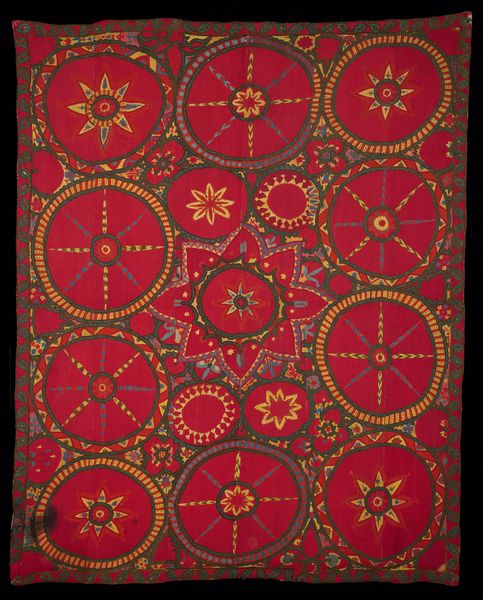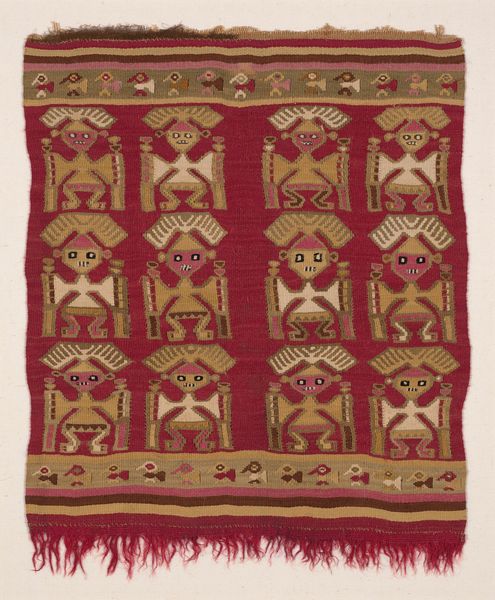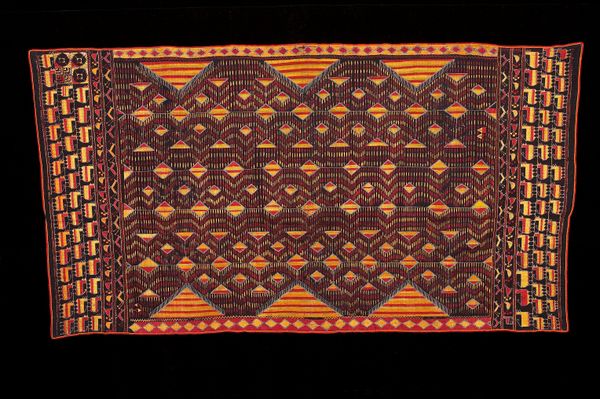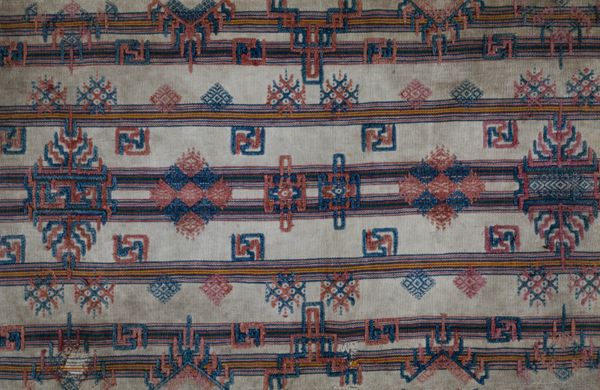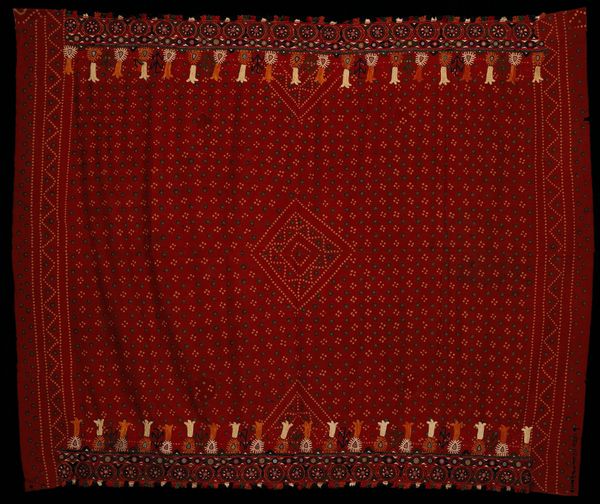
panel, silk, weaving, textile, cotton
#
pattern heavy
#
natural stone pattern
#
naturalistic pattern
#
panel
#
silk
#
pattern
#
weaving
#
textile
#
geometric pattern
#
abstract pattern
#
organic pattern
#
geometric
#
repetition of pattern
#
vertical pattern
#
pattern repetition
#
cotton
#
layered pattern
Dimensions: 90 3/4 x 55 1/2 in. (230.51 x 140.97 cm)
Copyright: Public Domain
Curator: What strikes you first about this textile panel? The bright crimson maybe? Editor: It's dizzying! All those shapes seem to vibrate against that saturated ground. It feels less like a calm textile and more like an expressionistic painting. Curator: It is a wonderful piece, created circa the 19th century. These kinds of panels, often silk and cotton weaves, served various functions, from wall hangings to clothing, displaying both wealth and regional identity. Editor: Looking closer, I'm drawn to the seemingly haphazard design, yet, the longer I gaze at the organic patterns, I am aware of an undeniable rhythm, hinting at the skilled labor behind its creation. How do you interpret the societal function? Curator: Well, its repeated patterns are not merely decorative. The motifs and colours—we see that rich red, the touches of green, yellow, blue— likely carried symbolic meanings. Consider who commissioned such a work and under what economic conditions the weaving took place. These textiles, while beautiful, existed within a social fabric of power. Editor: Absolutely. Who had access to silk and dyes? Whose labour produced it? That the art can veil inequalities. The panel appears purely decorative but it also exists as evidence of global trade and systems of labor in the 19th century. Curator: Right. What’s fascinating is how we display it now. Is it being framed and appreciated solely for aesthetic reasons, or does the museum text highlight this complicated background, its interwoven history? Editor: Ideally, both. To strip it of its artistic merit would be a disservice to the artist(s), but ignoring the circumstances of its creation would erase vital context, its existence as part of our history. This panel asks questions. Curator: Indeed, and that makes it invaluable—inviting critical reflection on our relationship with beauty, power, and the things we choose to preserve and exhibit. Editor: It reminds me of art's potential: a blend of form and function with ethical practice. It also reflects on the need to view artwork with critical awareness, engaging with history and labor practices embedded in material culture.
Comments
No comments
Be the first to comment and join the conversation on the ultimate creative platform.
